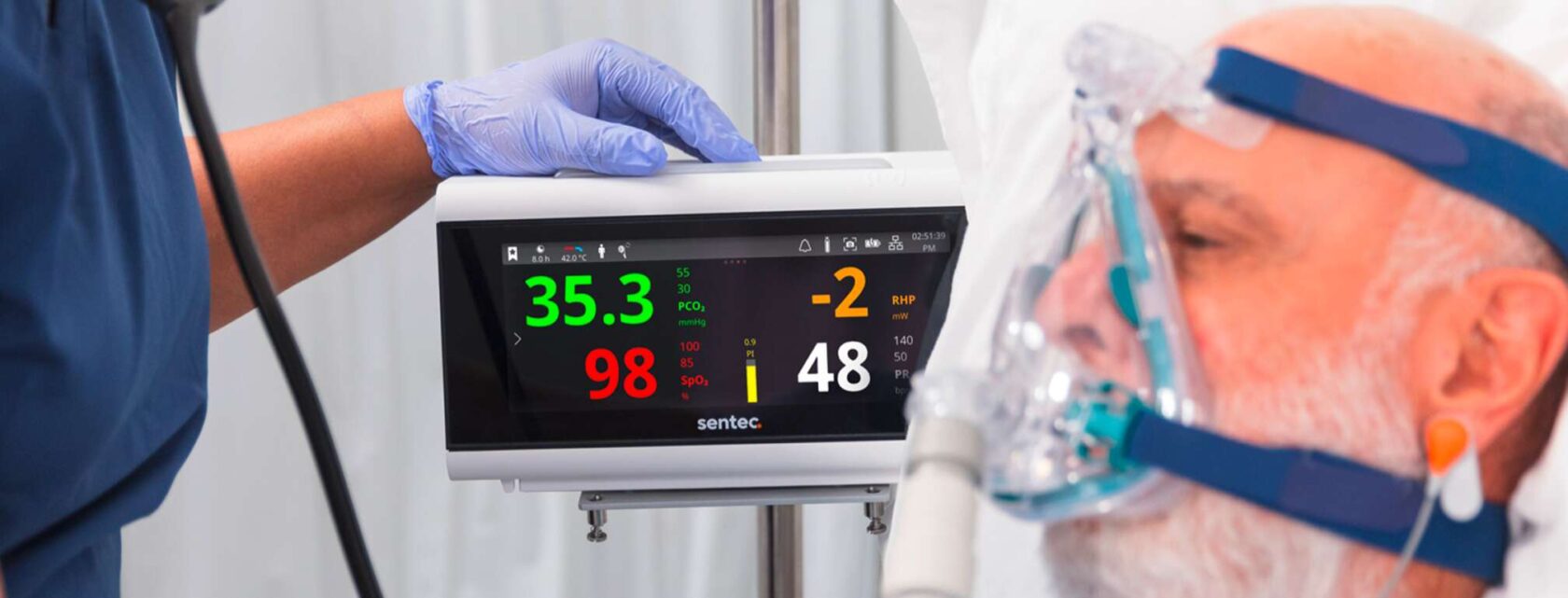sentec AG
TIMIK Group slår sig sammen med sentec, et schweizisk-amerikansk medicinsk udstyrsfirma, for at levere avancerede ikke-invasive respirationsmonitoreringsløsninger i hele Norden. Sammen giver vi klinikere mulighed for at få kontinuerlige, realtidsindsigter—der forbedrer patientpleje, forbedrer resultater og transformerer den daglige sundhedsydelse.
Innovativ transkutan og ikke-invasiv overvågning
TIMIK Group samarbejder med Sentec for at levere avancerede, ikke-invasive respiratoriske overvågningsløsninger på tværs af Europa. Sentecs dybdeteknologiske tilgang og forpligtelse til kvalitet sikrer kontinuerlig, præcis og sikker overvågning af ventilation og oxygenation. Deres omfattende portefølje inkluderer transkutan CO2 og SpO2 overvågning, elektrisk impedanstomografi og intrapulmonal perkusiv ventilation.
Sentec gør det muligt for klinikere at træffe rettidige, informerede beslutninger.
- Giver kontinuerlig, præcis transkutan overvågning
- Støtter klinikere med respiratoriske indsigter i realtid
- Forbedrer patientpleje med sikre, ikke-invasive overvågningsløsninger
sentec
Størrelse: 450+ ansatte
Områder: Respirations-, ventilations- og iltpleje.
Sentec er en schweizisk-amerikansk medicinsk udstyrsvirksomhed, der specialiserer sig i ikke-invasive respiratoriske overvågningsløsninger.

Oplev vores sentec-løsninger
Kontakt Nordic Business Director
Vi er klar til at vejlede dig og besvare alle forespørgsler om Respiratory Care-løsninger.
Ingen indlæg blev fundet

Bliv partner med os
Bliv vores partner
Bliv partner i TIMIK Group og bliv en del af et nordisk sundhedsnetværk, hvor innovation, tillid og samarbejde styrker fagfolk, forbedrer patientplejen og driver fremskridt i hele regionen–sammen opnår vi mere, fremmer vækst og skaber varig indflydelse på sundhedssektoren.

Lad os komme i kontakt!
Skriv til os – vi vil meget gerne høre fra dig og udforske spændende nye muligheder.
Vores produkter
Oplev vores løsninger, der forbedrer pleje og resultater på tværs af plejeområder i dag.
Om os
Din nordiske MedTech-partner, der leverer innovative løsninger for bedre patientpleje.